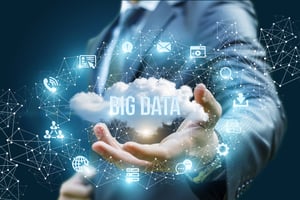Limitations of Big Data: Competing Against Luck Reviewed
![]() In his recent book, Competing Against Luck, Harvard professor Clayton Christensen discusses some of the limitations of Big Data in helping marketers fully understand the customer journey. With the rise of Big Data and Machine Learning, the time is right to explore limits and engineer solutions to overcome these.
In his recent book, Competing Against Luck, Harvard professor Clayton Christensen discusses some of the limitations of Big Data in helping marketers fully understand the customer journey. With the rise of Big Data and Machine Learning, the time is right to explore limits and engineer solutions to overcome these.
Those of you who have worked with me and my staff over the years know how we have always advocated for in-depth projective research techniques, quality over quantity.
Christensen's book is worth the read and offers several nuggets that encourage marketers to look "under the hood" and dig deeper in order to understand customer mindsets and not relying too heavily on the comfort and “crisp precision of spreadsheets". Here are some of our favorite highlights:
- Watch out for falsely attributed causality. Hot summer days mean a boost in ice cream sales and forest fires. But the increased consumption of ice cream did not cause forest fires and vice versa. Managers however are comfortable with correlation. As Christensen points out, “it allows them to sleep at night”.
 Big data is focused around customers and the product itself, not how well the product does the customer’s job. Customers, however, don’t buy products, they pull them into their lives to make progress
Big data is focused around customers and the product itself, not how well the product does the customer’s job. Customers, however, don’t buy products, they pull them into their lives to make progress- Managers like to keep the framing of competition simple, Coke vs Pepsi, Xbox vs PlayStation, etc. This puts tight constraints around innovation. it emphasizes bench marking and keeping up with Joneses instead of innovating on the “job to be done by the customer."
- BMW realized the real job was mobility. That is was competing not just with other auto companies. This led not only to the green hybrid but also the DriveNow ride share concept as the company shifted from selling products to responding to jobs to be done. Ford sees itself as an auto company but also a mobility company
- Many companies create epicycles, cross reference all manner of data but miss the why. As Jeff Bezos once said. "Perspective is worth 80 IQ points".
- Listen to not only what your customers say but what they don't say. Look at which products they "hire" but also which products they "fire". There are Big hires and Small hires. The Big hire is when the customer first downloads the app. The subsequent small hires are every time the customer uses the app to perform a "job". Most companies, Christensen contends, place too much emphasis on the Big hire.
- A "purpose" brand is a brand that nails a job to be done by a customer really well. Uber, Turbo Tax, Disney, OnStar, match.com, Open Table, and LinkedIn are prime examples. The reward is not brand love, that comes later, but that customers WILL WEAVE YOU INTO THE FABRIC OF THEIR LIVES. Single purpose brands that focus on one primary job to be done perform best financially. Campbell's V8 lost its way when it proliferated from its core purpose ("I could have had a V8") to competing with the proliferation of fruit drinks, thereby diluting their single purpose driven brand.
- There is passive data and active data, Big Data being part of the latter. Active data is transactional and therefore better structured and easier to measure and focus on. Active data is loud. Managers therefore feel assured when they shift attention from the hazy contours of a story of customer struggle to the crisp precision of spreadsheets. But what can feel like progress can be poison. Passive data does not broadcast loudly; you have to put the clues together. Making meaning of the jumble of real life customer experience is not about tabulating data but about assembling narratives on the jobs to be done
- Lastly, Christensen reminds us: DATA IS NOT REALITY BUT AN ABSTRACTION OF REALITY
